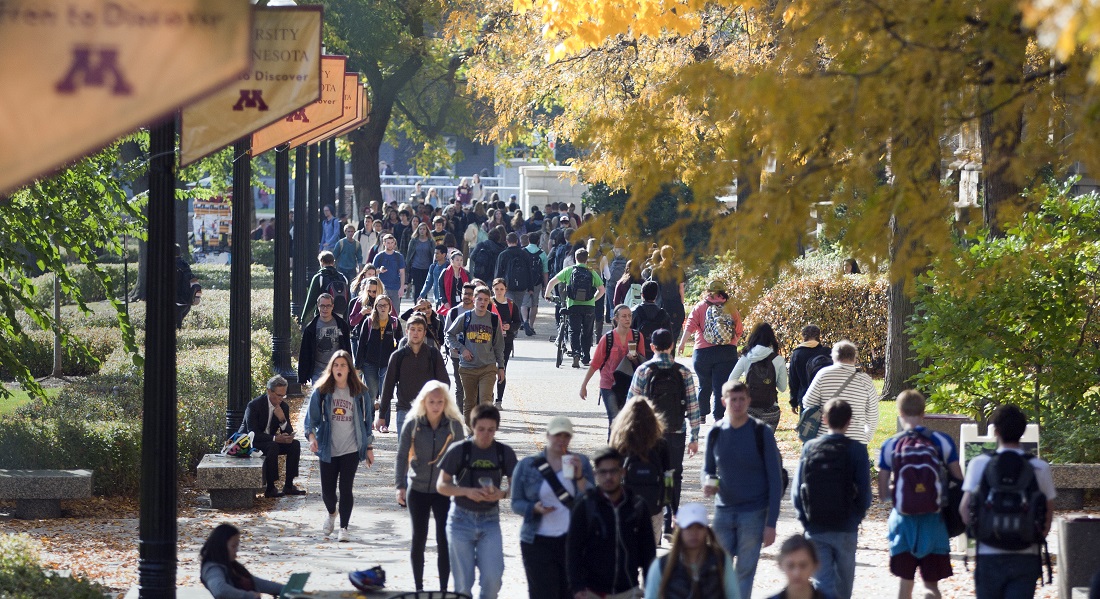Affordability, attainment key drivers in Walz's proposed higher education budget

When it comes to higher education, Gov. Tim Walz is giving Minnesotans straight A’s.
Or at least he’s grouping his recommended appropriations for higher education into categories that all start with the first letter of the alphabet. Perhaps borrowing from methods he used as a high school teacher, he’s created a pneumonic device for memorization.
The House Higher Education Finance and Policy Committee learned on Thursday that the governor’s priorities are affordability, access, attainment and agency operations. But the largest category, money-wise, starts with an S: system support. That’s where you’ll find the administration’s suggested outlays for the University of Minnesota, Minnesota State, and the Office of Higher Education, which oversees state financial aid programs.
The Walz administration proposes adding another $330.6 million in the next biennium to the state’s current appropriation of $3.5 billion for higher education. That would include an additional $131.5 million for the Minnesota State system of colleges and universities, $73 million for the University of Minnesota, and $896,000 for the Mayo Clinic’s medical school.
For comparison, the Minnesota State system presented to the committee a request for $350 million in the 2024-25 biennium, while the University of Minnesota asked for $205 million.
The differences between requests and the governor’s recommendations caused consternation among some committee members, as the governor recommended the Minnesota State system receive 38% of its request and the U of M 36%.
“I requested from the Minnesota State system a breakdown of what they would have to cut, campus by campus, if they got the entire request they put before us,” said the committee’s chair, Rep. Gene Pelowski Jr. (DFL-Winona). “Was there any consideration given by the governor, given this number, what those campuses would have to cut if this was their budget number?”
“That is why the governor fully funded the system stabilization request,” said Dennis Olson, commissioner of the Office of Higher Education. “He heard that over and over that the maintenance of what we have now is of utmost importance.”
Here’s how Olson broke down the A’s:
Affordability
- state grants for living and miscellaneous expenses, $50 million;
- state grant simplification and federal conformity, $18.7 million;
- American Indian scholars program, $17 million;
- Tribal College supplemental grant assistance program, $3.7 million; and
- loan repayment assistance program, $72,000.
Access
- next generation nursing assistant initiative, $3 million;
- Minitex Online Library health and nursing resources, $1.4 million;
- direct admissions, $850,000; and
- a transparent pathway to academic credit for child development associate credential holders, $475,000.
Attainment
- student parent support initiative, $13.4 million;
- grants to student teachers in shortage areas, $6 million;
- emergency assistance for postsecondary students, $4.4 million;
- underrepresented student teacher grants, $1.6 million;
- teacher shortage loan repayment program, $1.6 million; and
- sustaining and expanding intervention for a college attendance program, $800,000.
Agency operations
- maintaining current service levels for the Office of Higher Education, $3.2 million;
- Statewide Longitudinal Education Data System and Early Childhood Longitudinal Data System, $1.5 million;
- creating a director of tribal relations, public engagement and equal opportunity, $277,000; and
- creating a P-20 Partnership executive director, $277,000.
While Rep. Dan Wolgamott (DFL-St. Cloud) expressed dismay that the University of Minnesota’s proposed new scholarship program for Minnesota students was left out of the governor’s proposal, Rep. Greg Davids (R-Preston) suggested that, given declining enrollments, discussion of “rightsizing” the Minnesota State system may be necessary.
Related Articles
Search Session Daily
Advanced Search OptionsPriority Dailies
Ways and Means Committee OKs proposed $512 million supplemental budget on party-line vote
By Mike Cook Meeting more needs or fiscal irresponsibility is one way to sum up the differences among the two parties on a supplemental spending package a year after a $72 billion state budg...
Meeting more needs or fiscal irresponsibility is one way to sum up the differences among the two parties on a supplemental spending package a year after a $72 billion state budg...
Minnesota’s projected budget surplus balloons to $3.7 billion, but fiscal pressure still looms
By Rob Hubbard Just as Minnesota has experienced a warmer winter than usual, so has the state’s budget outlook warmed over the past few months.
On Thursday, Minnesota Management and Budget...
Just as Minnesota has experienced a warmer winter than usual, so has the state’s budget outlook warmed over the past few months.
On Thursday, Minnesota Management and Budget...